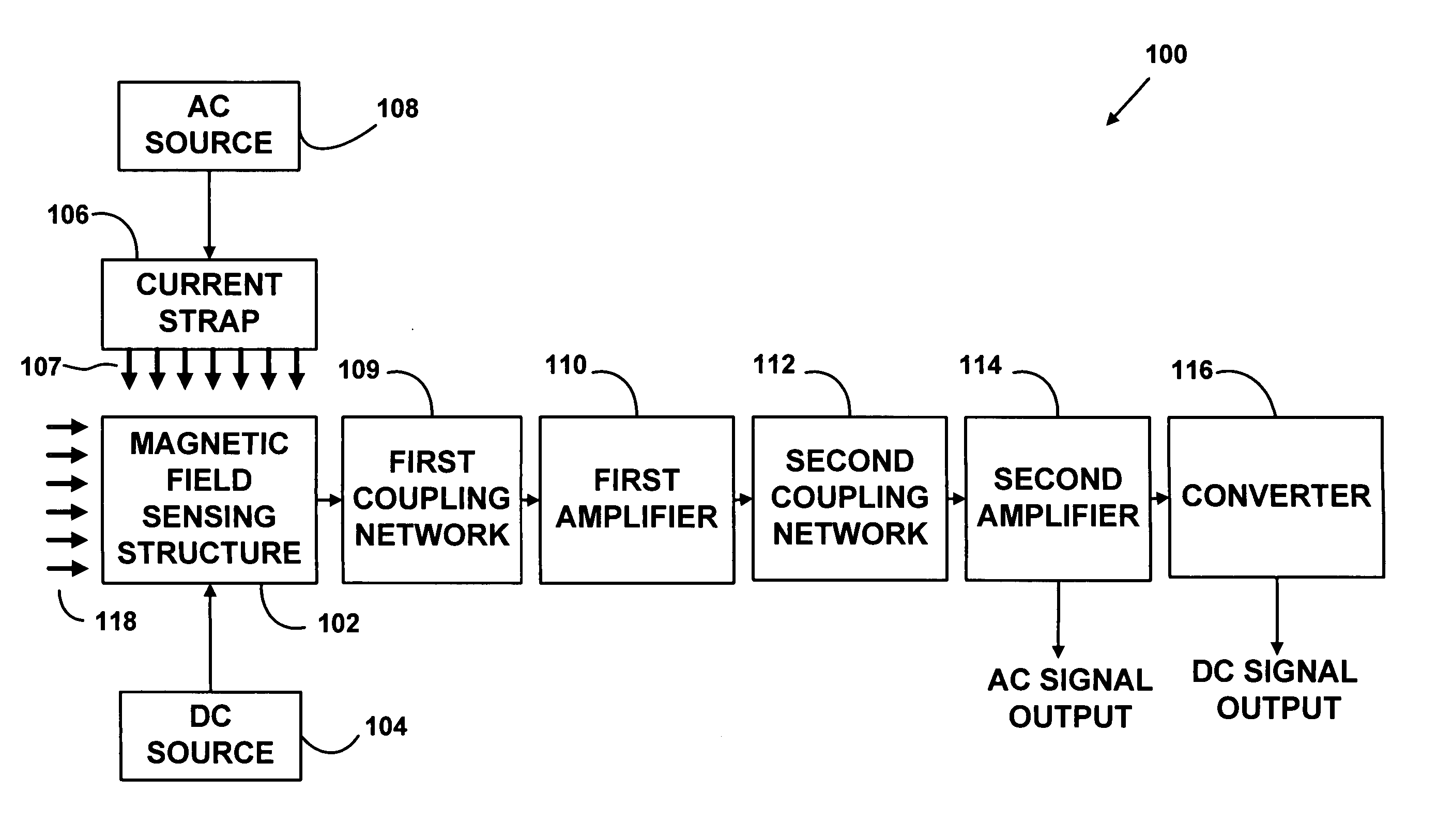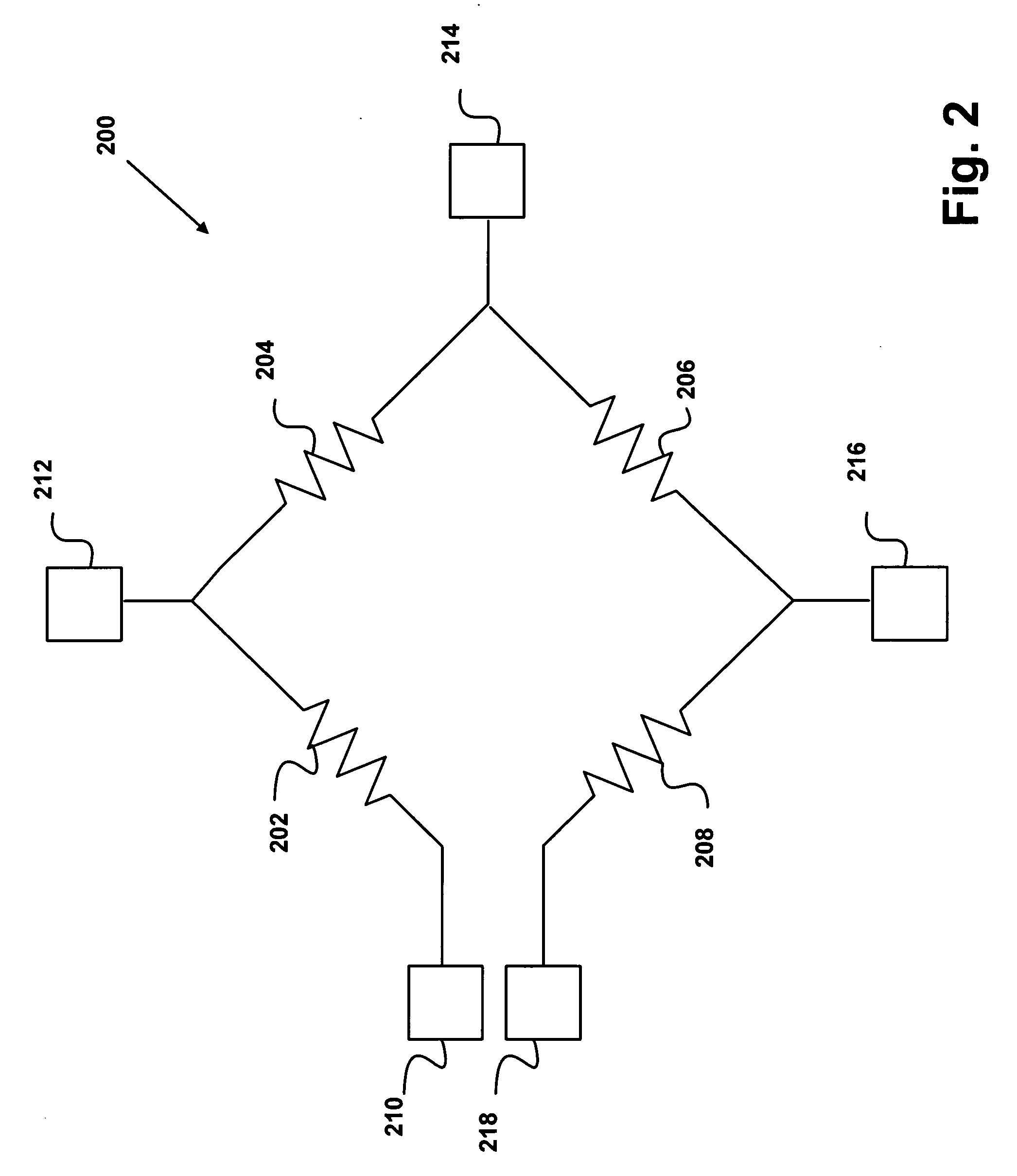High resolution and low power magnetometer using magnetoresistive sensors
a magnetoresistive sensor, high-resolution technology, applied in the field of magnetic field sensors, can solve the problems of high cost of individual coils, upset of the sensitivity of the mr sensor, and inability to use large external magnets, etc., to achieve higher resolution sensing and improve the noise level of the sensor
- Summary
- Abstract
- Description
- Claims
- Application Information
AI Technical Summary
Benefits of technology
Problems solved by technology
Method used
Image
Examples
Embodiment Construction
[0031]FIG. 1 is a block diagram of a magnetic field sensor 100. The magnetic field sensor 100 is typically formed on a semiconductor substrate using integrated circuit techniques. However, other substrate materials and fabrication techniques may be used. The magnetic sensor 100 may include a magnetic field sensing structure 102, a direct current (“DC”) source 104, a current strap 106, an alternating current (“AC”) source 108, a first coupling network 109, a first amplifier 110, a second coupling network 112, a second amplifier 114, and a converter 116.
[0032] Alternative components of the magnetic field sensor 100 may also be used instead of what is illustrated in FIG. 1. Also, the magnetic field sensor 100 may not require all components in all configurations. For example, only one coupling network and one amplifier may be used in some configurations of the magnetic field sensor 100.
[0033] The magnetic field sensing structure 102 may operate to detect external magnetic fields. The ...
PUM
 Login to View More
Login to View More Abstract
Description
Claims
Application Information
 Login to View More
Login to View More - R&D
- Intellectual Property
- Life Sciences
- Materials
- Tech Scout
- Unparalleled Data Quality
- Higher Quality Content
- 60% Fewer Hallucinations
Browse by: Latest US Patents, China's latest patents, Technical Efficacy Thesaurus, Application Domain, Technology Topic, Popular Technical Reports.
© 2025 PatSnap. All rights reserved.Legal|Privacy policy|Modern Slavery Act Transparency Statement|Sitemap|About US| Contact US: help@patsnap.com



